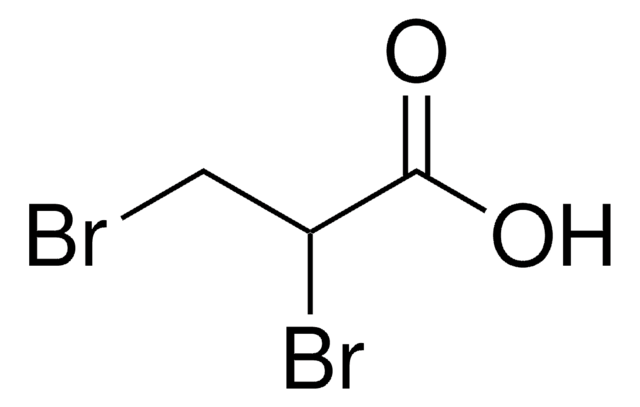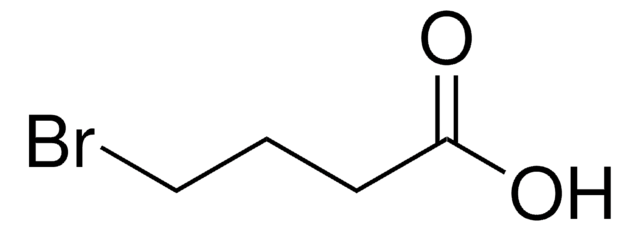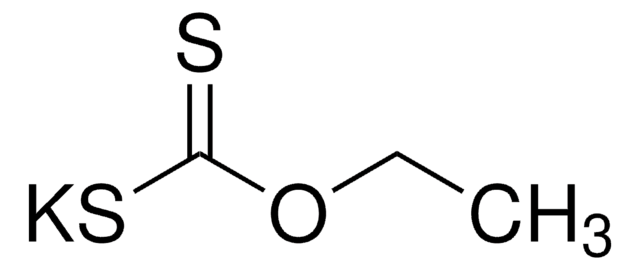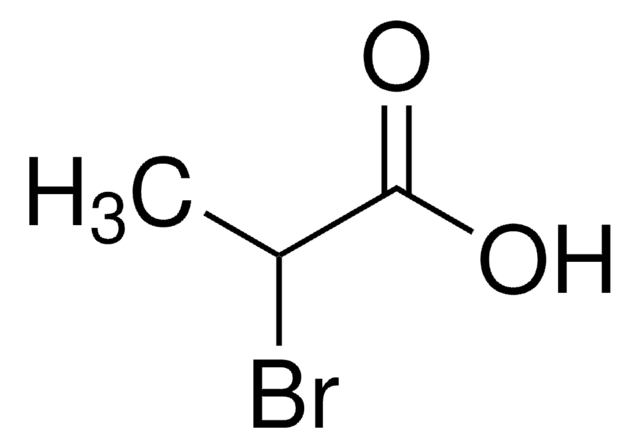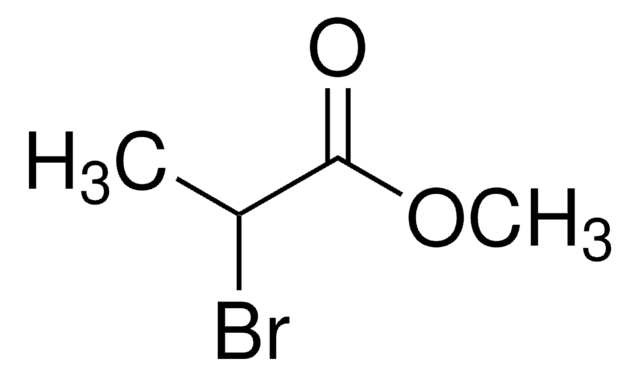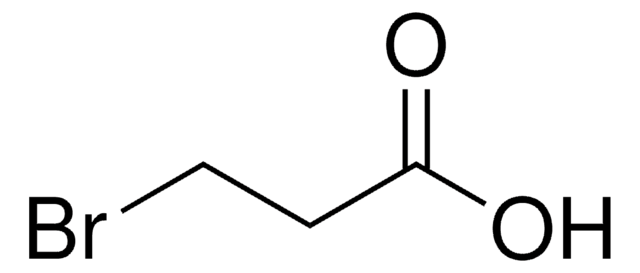All Photos(1)
About This Item
Linear Formula:
C2H5CH(Br)CO2H
CAS Number:
Molecular Weight:
167.00
Beilstein:
1720950
EC Number:
MDL number:
UNSPSC Code:
12352100
PubChem Substance ID:
NACRES:
NA.22
Recommended Products
Assay
97%
form
liquid
refractive index
n20/D 1.474 (lit.)
bp
99-103 °C/10 mmHg (lit.)
mp
−4 °C (lit.)
solubility
water: soluble 15 part
alcohol: soluble
diethyl ether: soluble
density
1.567 g/mL at 25 °C (lit.)
SMILES string
CCC(Br)C(O)=O
InChI
1S/C4H7BrO2/c1-2-3(5)4(6)7/h3H,2H2,1H3,(H,6,7)
InChI key
YAQLSKVCTLCIIE-UHFFFAOYSA-N
Looking for similar products? Visit Product Comparison Guide
Application
2-Bromobutyric acid was used in the synthesis of S-(1-carboxypropyl)-L-cysteine.
Signal Word
Danger
Hazard Statements
Precautionary Statements
Hazard Classifications
Acute Tox. 4 Oral - Eye Dam. 1 - Skin Corr. 1B
Storage Class Code
8A - Combustible corrosive hazardous materials
WGK
WGK 3
Flash Point(F)
No data available
Flash Point(C)
No data available
Personal Protective Equipment
dust mask type N95 (US), Eyeshields, Gloves
Choose from one of the most recent versions:
Already Own This Product?
Find documentation for the products that you have recently purchased in the Document Library.
Wan-Ning Lee et al.
Food chemistry, 291, 30-37 (2019-04-23)
The formation of toxic disinfection by-products (DBPs) is among the main concerns in the use of chlorine sanitizers for washing fresh and fresh-cut produce to minimize microbial cross-contamination. Even so, robust analytical methods for measuring various DBPs in produce have
C Blarzino et al.
The Italian journal of biochemistry, 36(1), 1-7 (1987-01-01)
Details are reported for the synthesis of S-(1-carboxyethyl)-L-cysteine (1-CEC) and S-(1-carboxypropyl)-L-cysteine (1-CPC) from cysteine and 2-bromopropionic acid or 2-bromobutyric acid, respectively. Some analytical data and the behaviour of these two compounds on paper and ion-exchange chromatography are also reported, which
W E Roediger et al.
Lipids, 25(10), 646-652 (1990-10-01)
Attempts were made to define which fatty acid (2:0 to 18:1) was optimally oxidized by isolated colonocytes (colonic epithelial cells) and to select inhibitors of fatty acid oxidation which would be analogous in their action to the inhibition of fatty
Yu-Syuan Luo et al.
Toxicology, 409, 33-43 (2018-07-28)
Trichloroethylene (TCE) and tetrachloroethylene (PCE) are structurally similar chemicals that are metabolized through oxidation and glutathione conjugation pathways. Both chemicals have been shown to elicit liver and kidney toxicity in rodents and humans; however, TCE has been studied much more
Milena E Miska et al.
Rapid communications in mass spectrometry : RCM, 29(24), 2341-2348 (2015-11-14)
The environmental occurrence of chlorinated acetic acids (CAAs) has been extensively studied, but the sources and transport are still not yet fully understood. A promising approach for source apportionment and process studies is the isotopic characterization of target compounds. We
Our team of scientists has experience in all areas of research including Life Science, Material Science, Chemical Synthesis, Chromatography, Analytical and many others.
Contact Technical Service